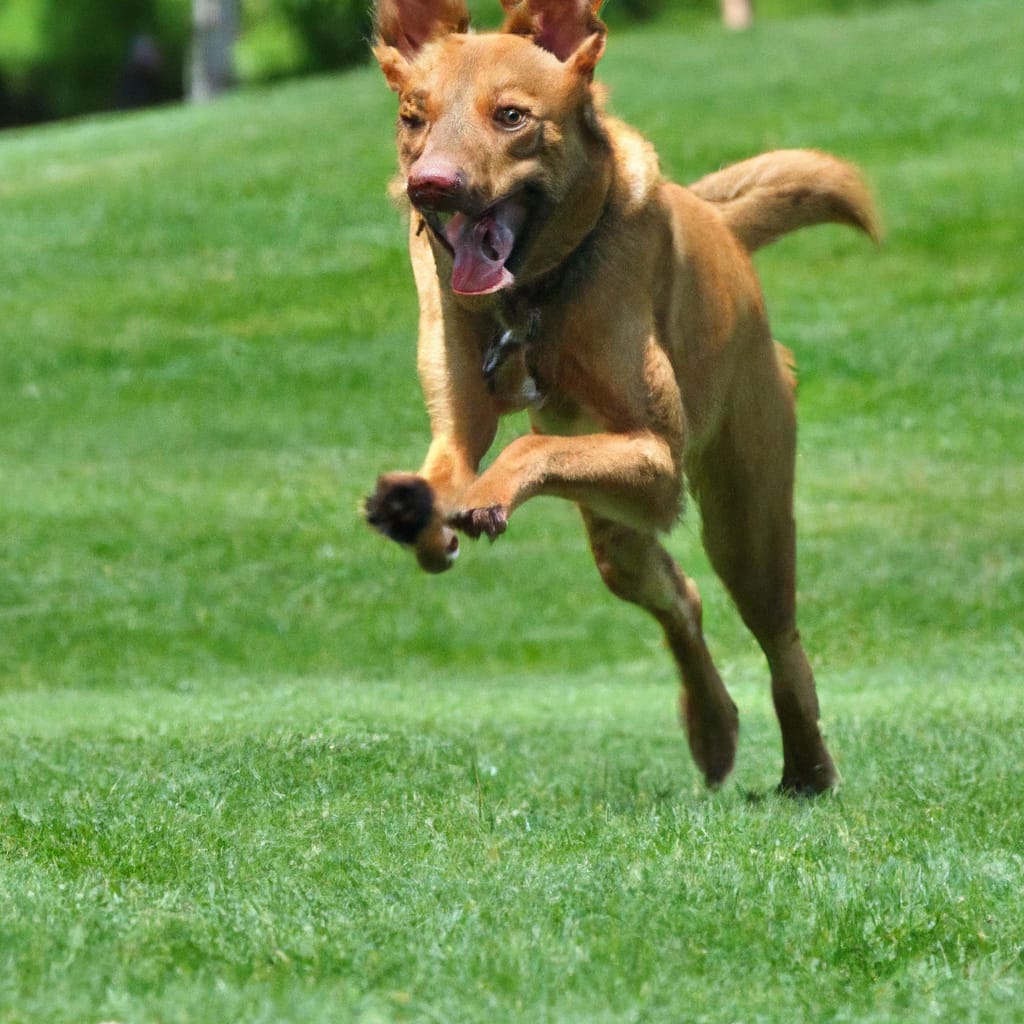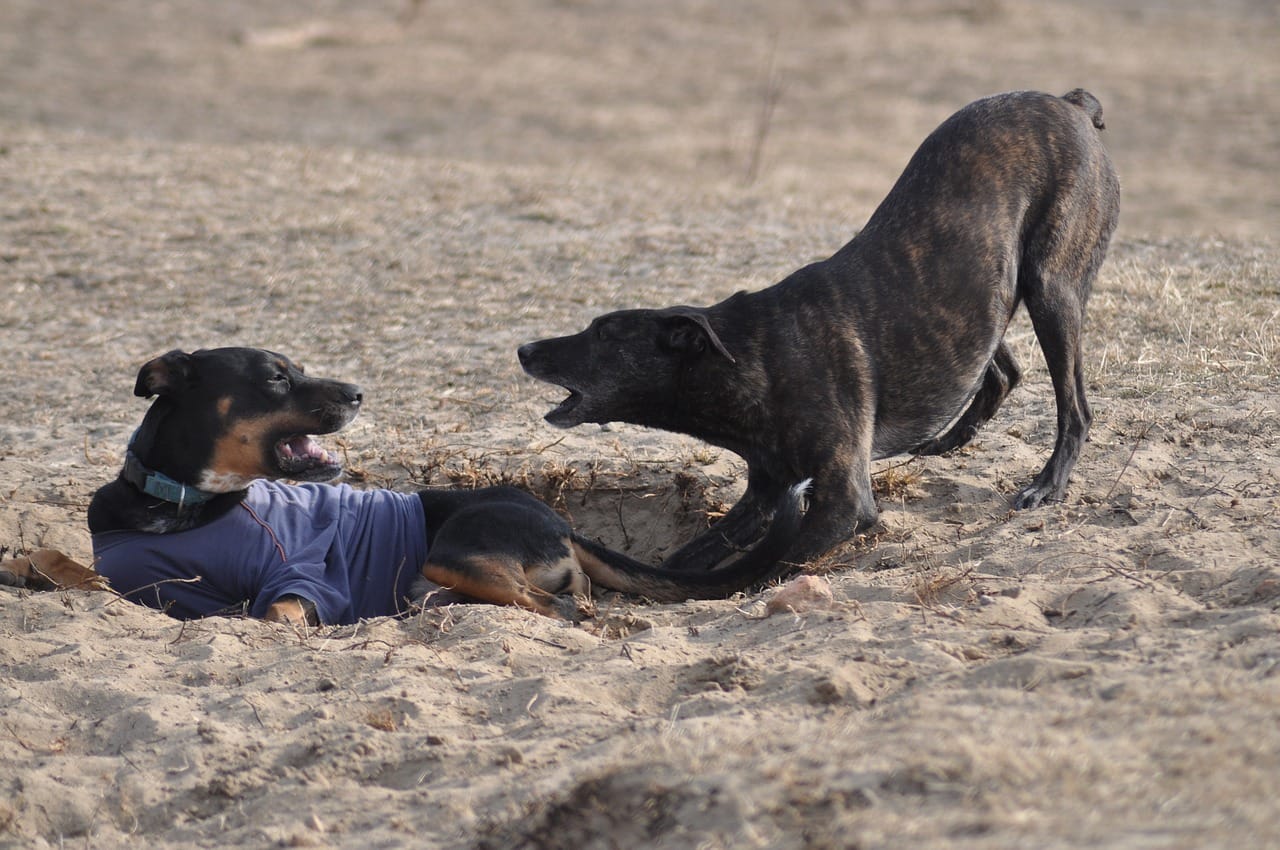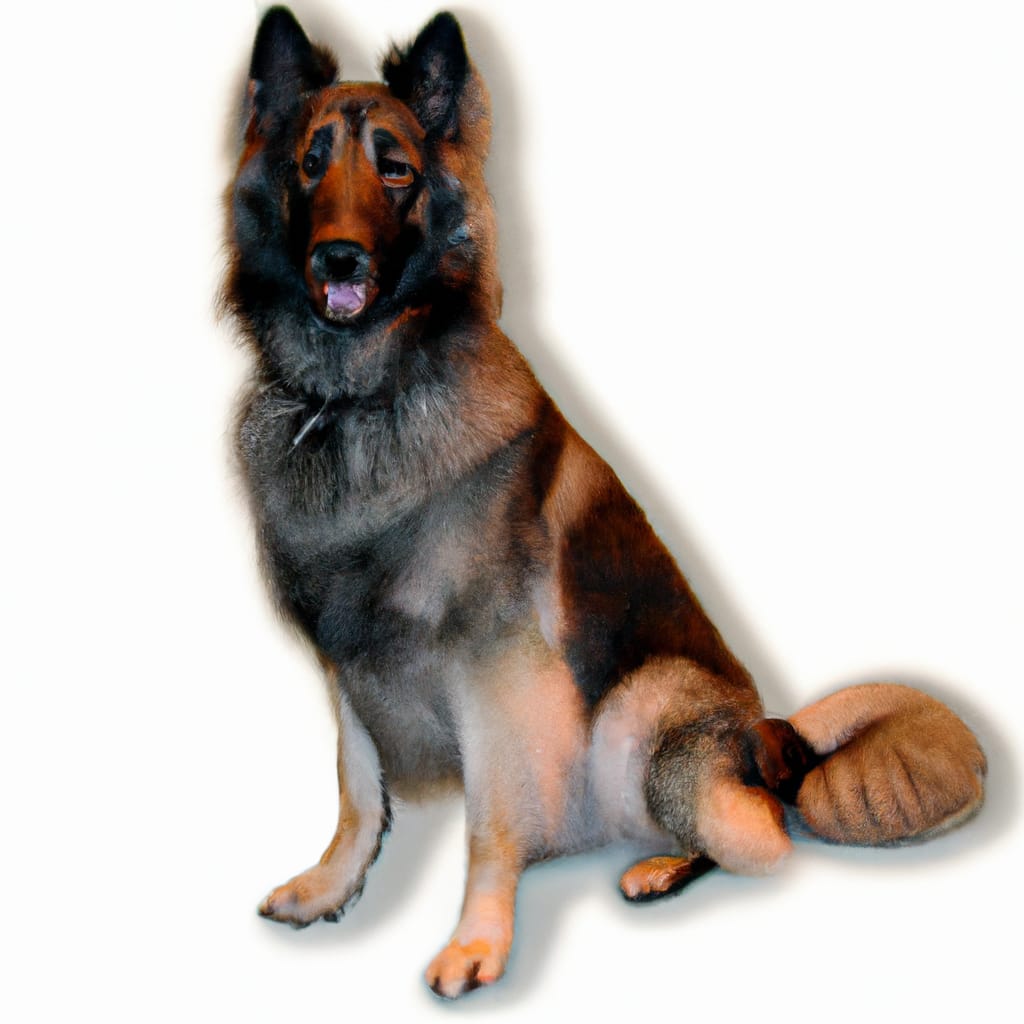The Impact Of Exercise On Your Dog’s Behavior And Well-being
If you want to ensure your furry friend’s happiness and well-being, it’s crucial to understand the impact of regular exercise on their behavior. Exercise not only benefits your dog physically, but it also plays a significant role in their mental stimulation and overall emotional health. In this article, we will explore just how exercise can positively influence your dog’s behavior, allowing them to lead a more fulfilling and balanced life. So, lace up your sneakers and get ready to embark on a journey of exercise and discovery with your beloved four-legged companion.
The Impact of Exercise on Your Dog’s Behavior and Well-being
When it comes to ensuring the overall health and well-being of your furry companion, regular exercise is key. Just like humans, dogs benefit immensely from physical activity, both mentally and physically. In this article, we will explore the various benefits that exercise brings to your dog, as well as the different activities and best practices to follow for a happy and healthy four-legged friend.
Physical Benefits of Exercise
Improving cardiovascular health
Regular exercise, such as walking, running, and swimming, can significantly improve your dog’s cardiovascular health. Going for a daily walk or engaging in activities that get their heart pumping helps strengthen their heart muscles and improves blood circulation. This, in turn, reduces the risk of heart diseases, such as heart attacks and strokes, ensuring your dog’s heart remains in top shape.
Maintaining a healthy weight
Just like humans, maintaining a healthy weight is vital for a dog’s overall well-being. Regular exercise helps burn excess calories and prevents obesity in your furry friend. By engaging in physical activities such as running and playing fetch, your dog can burn off energy and maintain a healthy weight, reducing the risk of obesity-related health issues, such as diabetes and joint problems.
Increasing muscle strength and flexibility
Physical activities like running, swimming, and agility training help strengthen and tone your dog’s muscles. This increased muscle strength allows them to perform everyday tasks, such as jumping and climbing, with ease, improving their overall mobility and flexibility. It also minimizes the risk of muscle injuries and helps keep their joints healthy and flexible.
Boosting the immune system
Regular exercise plays a crucial role in boosting your dog’s immune system. Exercise increases the flow of lymphatic fluid, which helps carry immune cells throughout the body, improving their ability to fight off infections and diseases. Additionally, exercise promotes healthy respiratory function, reducing the likelihood of respiratory illnesses.

Mental Benefits of Exercise
Reducing anxiety and stress
One of the most significant mental benefits of exercise for dogs is its ability to reduce anxiety and stress. Daily exercise releases endorphins, also known as the “feel-good” hormones, which help alleviate symptoms of anxiety and stress. Whether it’s a leisurely walk or an intense game of fetch, physical activity provides a healthy outlet for your dog to release pent-up energy, resulting in a calmer and more relaxed demeanor.
Alleviating boredom and destructive behavior
Regular exercise is essential in preventing boredom and destructive behavior in dogs. When dogs are bored or lack mental stimulation, they may turn to destructive behaviors like chewing on furniture or excessive barking. Engaging them in mentally stimulating activities, such as obedience training or puzzle toys, not only exercises their brains but also helps keep them occupied and content.
Promoting better sleep
Just like humans, dogs also require quality sleep for optimal health and well-being. Regular exercise promotes better sleep patterns in dogs, ensuring they get the rest they need to recharge. Physical activities help tire them out, allowing them to fall into a deep and restful sleep, resulting in improved overall behavior and mood.
Enhancing cognitive function
Exercise not only benefits a dog’s physical health but also enhances their cognitive function. Engaging in mentally stimulating activities, such as scent work and tracking, helps sharpen their problem-solving skills and strengthens their memory. This mental stimulation is vital for dogs of all ages, especially senior dogs, as it helps ward off cognitive decline and keeps their minds sharp.
Social Benefits of Exercise
Building a stronger bond with the owner
Engaging in regular exercise with your dog not only improves their physical and mental well-being but also strengthens your bond with them. Activities like walking, running, or playing together create moments of shared joy and companionship. This shared experience enhances the bond between you and your dog, fostering trust and deepening your relationship.
Enhancing socialization skills with other dogs
When dogs engage in exercise activities such as group walks or visits to the dog park, they have the opportunity to interact and socialize with other dogs. These social interactions help enhance their socialization skills and promote positive behaviors when encountering other dogs in different settings. Regular exercise in a social environment contributes to your dog’s overall well-being and happiness.
Reducing aggression and dominance issues
Regular exercise plays a crucial role in reducing aggression and dominance issues in dogs. Physical activity helps channel their excess energy in healthy ways, preventing the build-up of frustration and aggression. A tired dog is generally a happy and well-behaved dog, as exercise helps release pent-up energy and reduces the likelihood of behavioral problems.
Improving overall temperament
Exercise has a profound impact on a dog’s overall temperament. By engaging in regular physical activity, dogs become more balanced, content, and well-adjusted. Regular exercise contributes to their mental and emotional well-being, resulting in a more relaxed and happy demeanor. A well-exercised dog is less likely to exhibit behavioral issues and is generally more pleasant to be around.

Physical Activities for Dogs
Walking
Walking is one of the most accessible and beneficial activities for dogs of all ages and fitness levels. It provides an opportunity for them to explore their surroundings, get fresh air, and engage in light exercise. Whether it’s a leisurely stroll around the neighborhood or a brisk walk through the park, regular walking helps maintain their physical health and mental well-being.
Running and jogging
For dogs with higher energy levels, running or jogging can be an excellent form of exercise. Whether it’s a steady jog alongside you or chasing after a ball, running helps burn off excess energy and keeps your dog physically fit. It’s important to start slowly and gradually increase the intensity and duration to avoid overexertion.
Swimming
Swimming is a low-impact exercise that provides a full-body workout for dogs. It is particularly beneficial for dogs with joint issues or those recovering from injuries. Swimming helps build muscle strength, improves cardiovascular fitness, and provides a fun and refreshing activity during warmer months. Always ensure your dog’s safety by supervising them closely and providing appropriate flotation devices if needed.
Agility training
Agility training involves teaching your dog to navigate through a series of obstacles, such as jumps, tunnels, and weave poles. This activity not only provides physical exercise but also enhances their focus, coordination, and problem-solving skills. Agility training is a great way to challenge your dog both mentally and physically while strengthening your bond through positive reinforcement and teamwork.
Mental Stimulation for Dogs
Puzzle toys and treat dispensers
Puzzle toys and treat dispensers are excellent tools to provide mental stimulation and keep your dog entertained. These toys require your dog to solve puzzles or manipulate objects to access treats or rewards. They help prevent boredom, improve problem-solving skills, and provide a mentally stimulating activity for your furry friend.
Obedience and trick training
Engaging in obedience and trick training sessions with your dog is not only a great way to teach them essential commands but also provides mental stimulation. Training sessions challenge their cognitive abilities, improve their focus and concentration, and deepen the bond between you and your dog. The rewards of successfully learning new tricks or commands also boost their confidence and self-esteem.
Scent work and tracking
Dogs have an incredible sense of smell, and engaging them in scent work and tracking activities taps into this natural ability. Introducing your dog to scent work involves hiding treats or toys and allowing them to use their scenting skills to find the hidden items. This activity provides mental stimulation, enhances their problem-solving abilities, and gives them a sense of purpose and accomplishment.
Hide and seek games
Hide and seek games are a fun way to mentally stimulate your dog while providing exercise. You can hide treats or toys in various places around your home or backyard, encouraging your dog to use their nose to find them. This game enhances their problem-solving skills, keeps them engaged, and provides a bonding experience between you and your furry companion.
Best Practices for Exercising Your Dog
Consulting a veterinarian
Before starting any exercise routine, it’s important to consult with your veterinarian, especially if your dog has any existing health conditions or injuries. They can provide specific guidance and recommendations based on your dog’s breed, age, and overall health.
Taking into account breed and age
Different dog breeds have varying exercise needs, so it’s essential to consider your dog’s breed when planning an exercise routine. High-energy breeds like Border Collies and Retrievers may require more intense and frequent exercise, while senior dogs may benefit from low-impact activities. Additionally, puppies require less strenuous exercise to prevent strain on their developing bodies.
Gradually increasing intensity and duration
When starting an exercise routine, it’s important to begin slowly and gradually increase the intensity and duration. This allows your dog’s body to adjust and prevents overexertion or injuries. Pay attention to your dog’s cues and monitor their energy levels during and after exercise to ensure they are not overexerting themselves.
Providing proper hydration and nutrition
During exercise, it’s crucial to ensure your dog has access to fresh water to stay properly hydrated. Additionally, providing a balanced and nutritious diet tailored to your dog’s individual needs is essential for supporting their overall health and energy levels. Consult with your veterinarian to determine the best nutrition plan for your furry friend.
Recognizing Signs of Overexertion and Fatigue
Excessive panting and drooling
One of the signs of overexertion or fatigue in dogs is excessive panting and drooling. If your dog is panting heavily or drooling excessively during or after exercise, it may indicate that they are pushing themselves too hard and need to rest.
Limping or lameness
Any sign of limping or lameness during or after exercise should be taken seriously. It could indicate an injury or strain, and it’s essential to give your dog the appropriate rest and seek veterinary attention if necessary.
Sluggishness or lack of interest in activities
If your normally active dog becomes sluggish or shows a lack of interest in activities they usually enjoy, it may be a sign of overexertion or fatigue. Pay attention to their behavior and allow them to rest and recover as needed.
Vomiting or diarrhea
Vomiting or diarrhea after exercise can be a sign of overexertion or other underlying health issues. If this occurs, it’s important to contact your veterinarian for guidance and proper evaluation.
Adapting Exercise for Different Dog Breeds
High-energy breeds like Border Collies and Retrievers
High-energy breeds like Border Collies and Retrievers require a significant amount of exercise to maintain their physical and mental well-being. They thrive on activities like running, agility training, and interactive play that challenge them both physically and mentally.
Brachycephalic breeds like Bulldogs and Pugs
Brachycephalic breeds, characterized by their flat faces and shortened airways, have different exercise needs due to their breathing difficulties. They are more prone to overheating and respiratory distress, making it important to avoid intense exercise in hot weather and opt for short walks or other low-impact activities.
Giant breeds like Great Danes and Mastiffs
Giant breeds have unique exercise requirements due to their size and heavy build. While they may benefit from moderate exercise, it’s important to be mindful of their joints and avoid activities that put excessive strain on their bones and joints. Gentle walks and low-impact activities are generally more suitable for these breeds.
Senior and toy breeds
Senior dogs and toy breeds may require lighter exercise routines due to their age or size. It’s important to consider their physical limitations and focus on low-impact activities such as swimming or gentle walks. Regular breaks and shorter exercise sessions throughout the day can help prevent exhaustion and strain.
Exercising Senior Dogs
Low-impact activities like swimming or gentle walking
As dogs age, their exercise needs change. Low-impact activities like swimming or gentle walking are excellent options for senior dogs. These activities provide the necessary physical exercise without putting excessive strain on their joints, ensuring they can stay active and mobile while minimizing the risk of injuries.
Shorter duration but more frequent exercises
Instead of longer exercise sessions, breaking up their exercise routine into shorter, more frequent sessions can be beneficial for senior dogs. This allows them to rest and recover between sessions, preventing exhaustion and reducing the likelihood of overexertion.
Joint supplements and senior-specific diets
To support joint health in senior dogs, incorporating joint supplements into their diet can be beneficial. These supplements, such as glucosamine and chondroitin, help promote joint mobility and reduce discomfort. Additionally, feeding your senior dog a balanced and senior-specific diet can provide the necessary nutrients for their aging bodies.
Regular veterinary check-ups
Regular veterinary check-ups are crucial for senior dogs to monitor their overall health and address any age-related issues. Your veterinarian can provide tailored recommendations for exercise and make adjustments as necessary to accommodate your senior dog’s changing needs.
Conclusion
Regular exercise plays a vital role in promoting your dog’s overall behavior and well-being. Engaging in physical activities not only improves their cardiovascular health, maintains a healthy weight, and increases muscle strength and flexibility but also provides mental stimulation, reduces anxiety and stress, and enhances their socialization skills. By implementing different exercises and following best practices, you can ensure your furry companion leads a happy, healthy, and fulfilling life. Remember to always consult with your veterinarian and listen to your dog’s cues to provide them with the exercise routine that suits their individual needs. So get out there, have fun, and enjoy the journey of exercising with your beloved furry friend!












